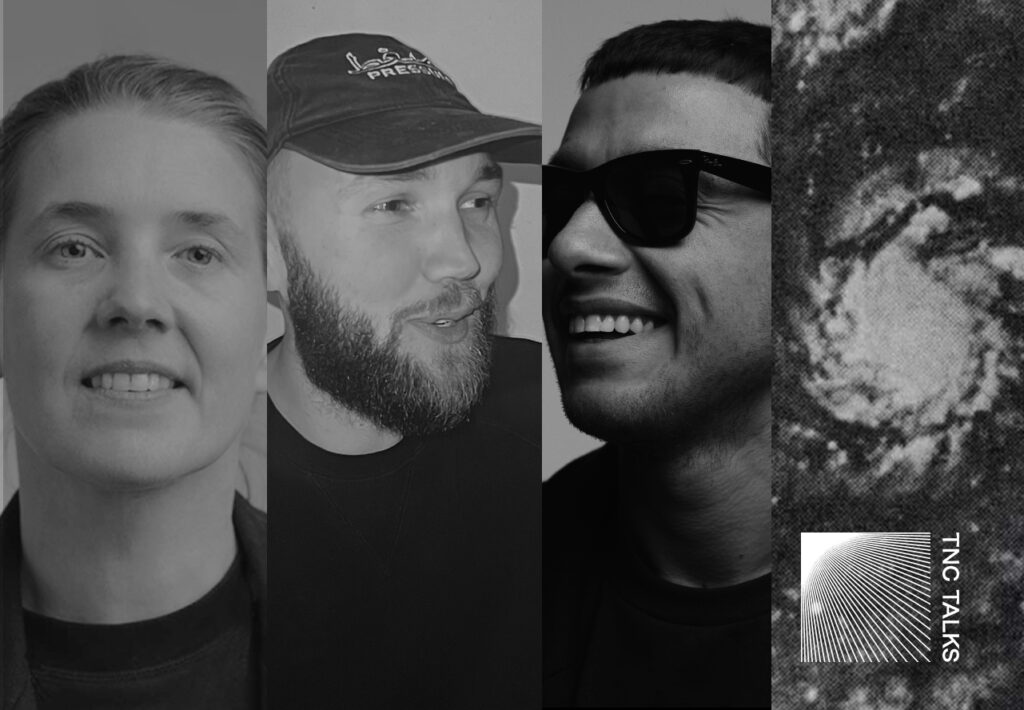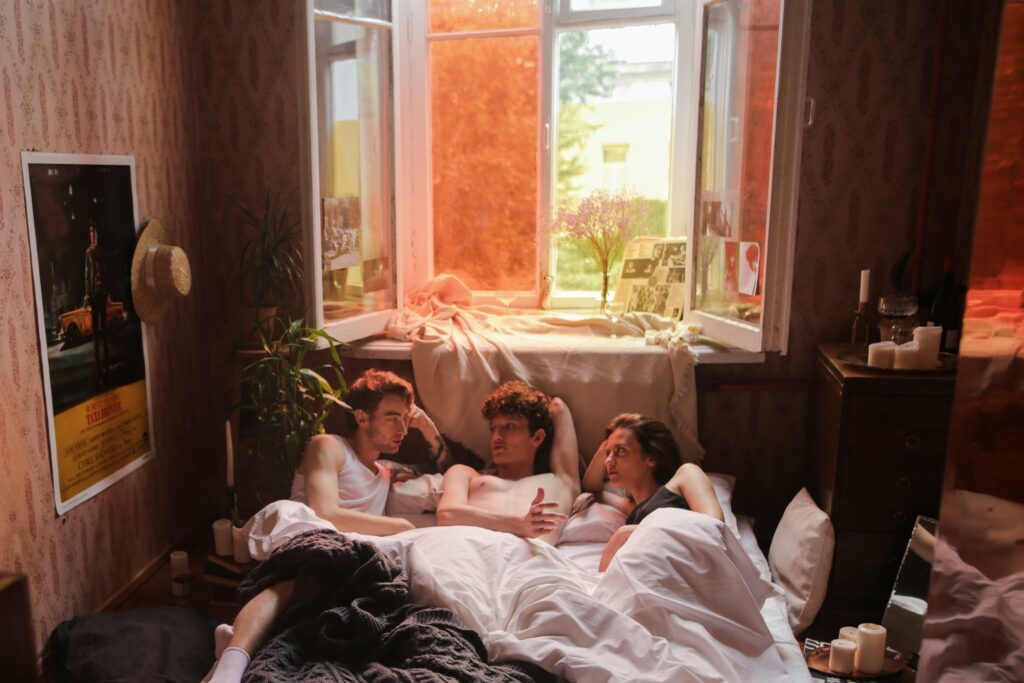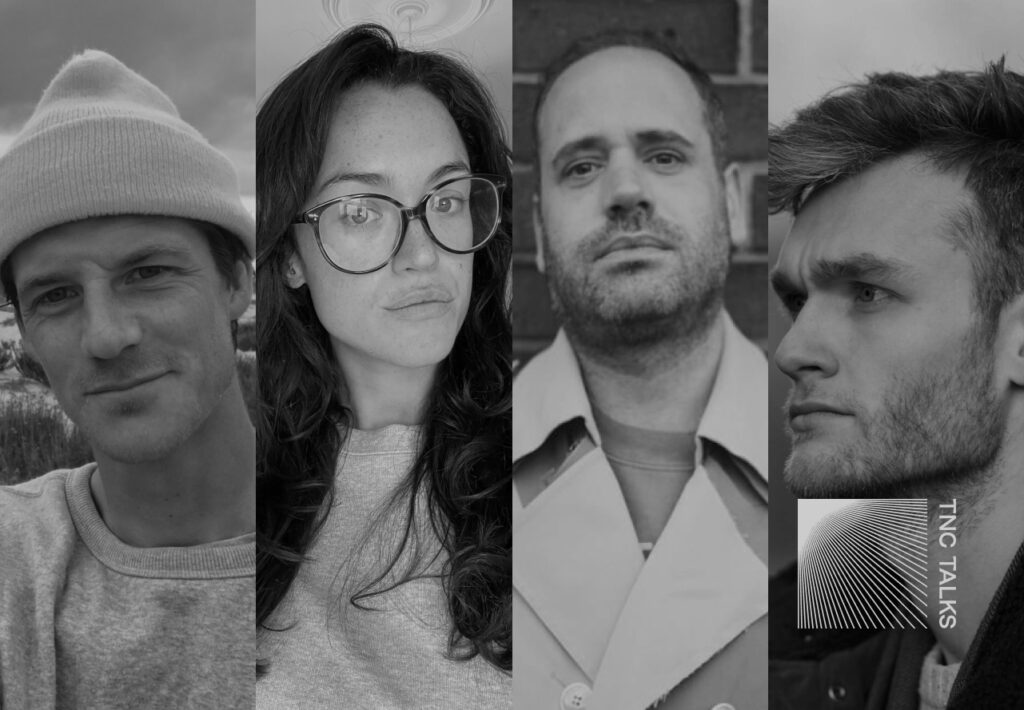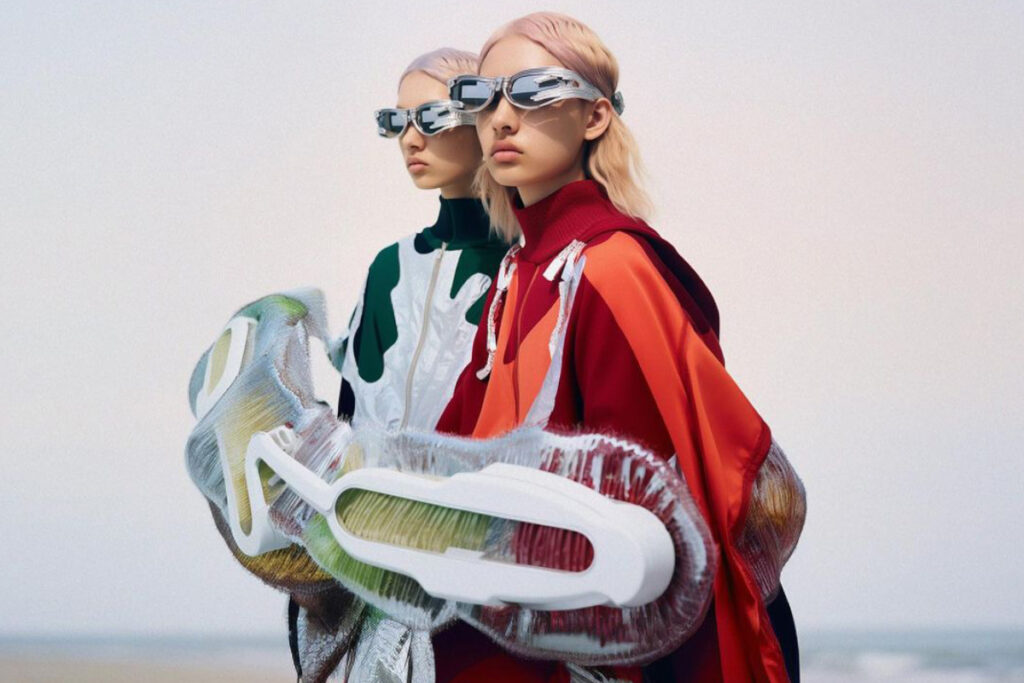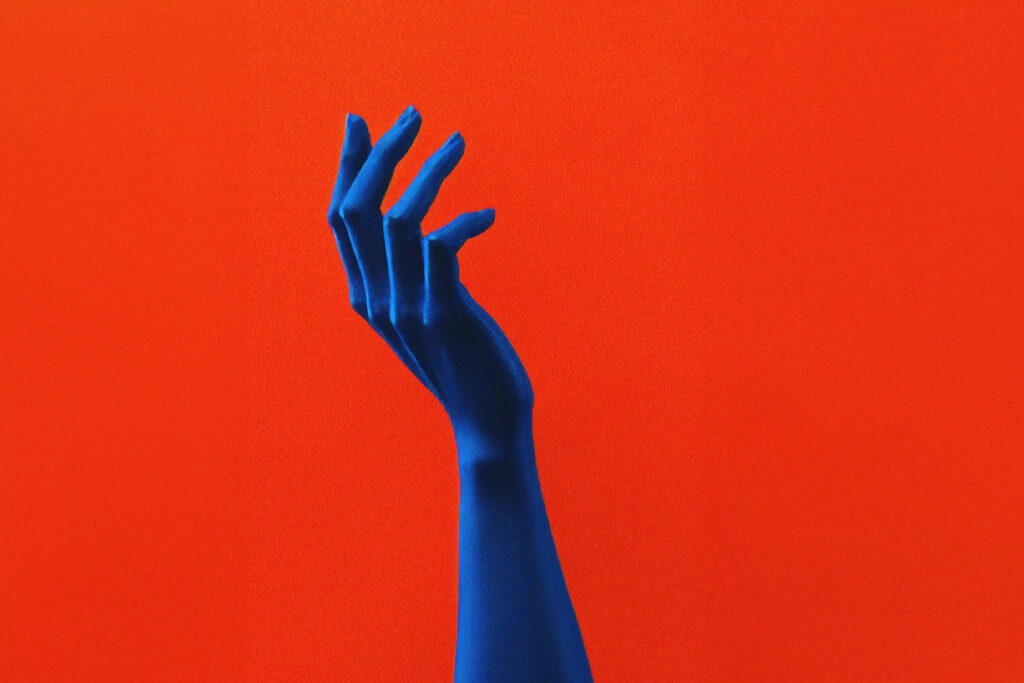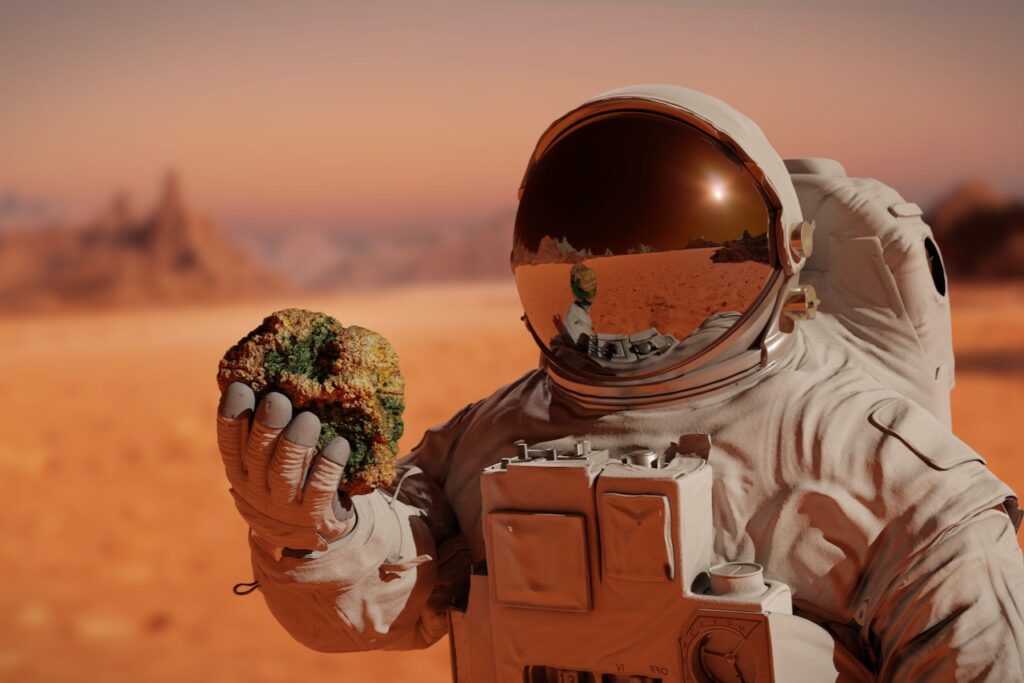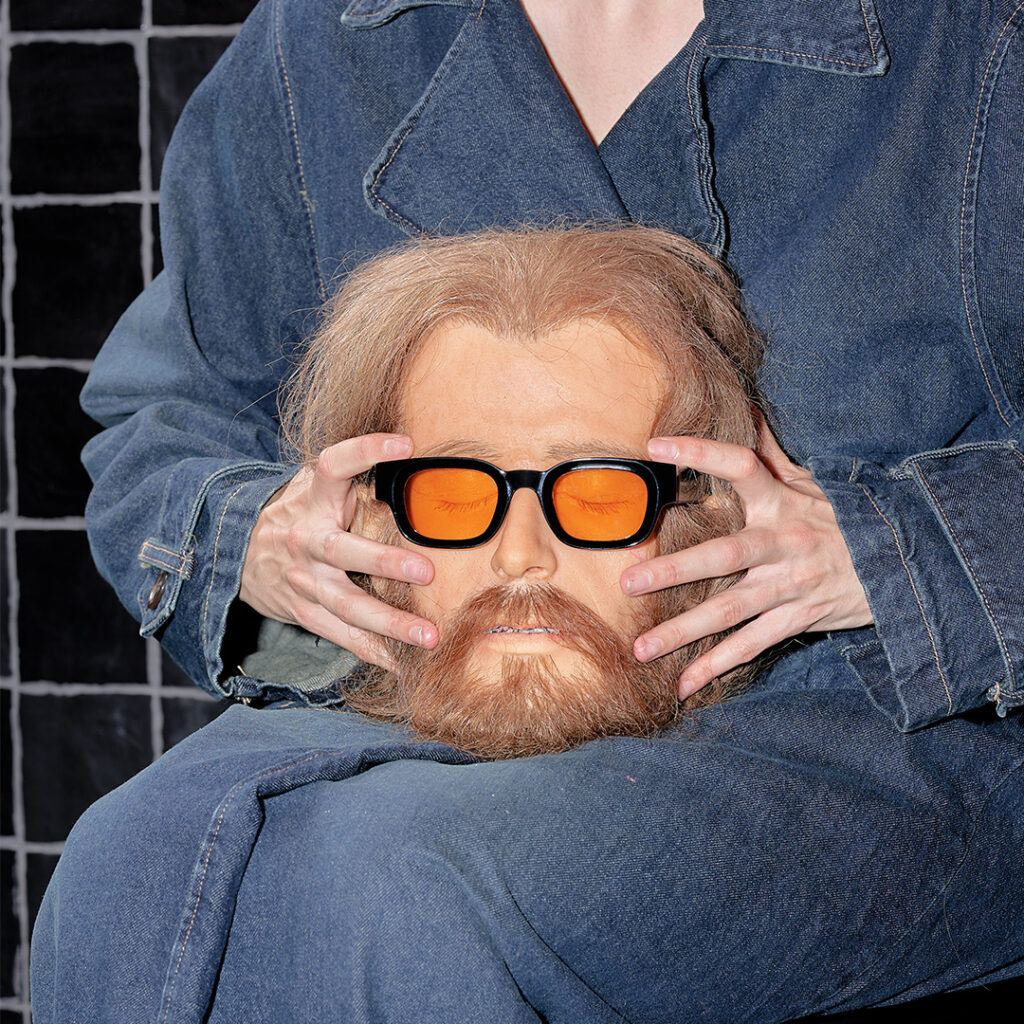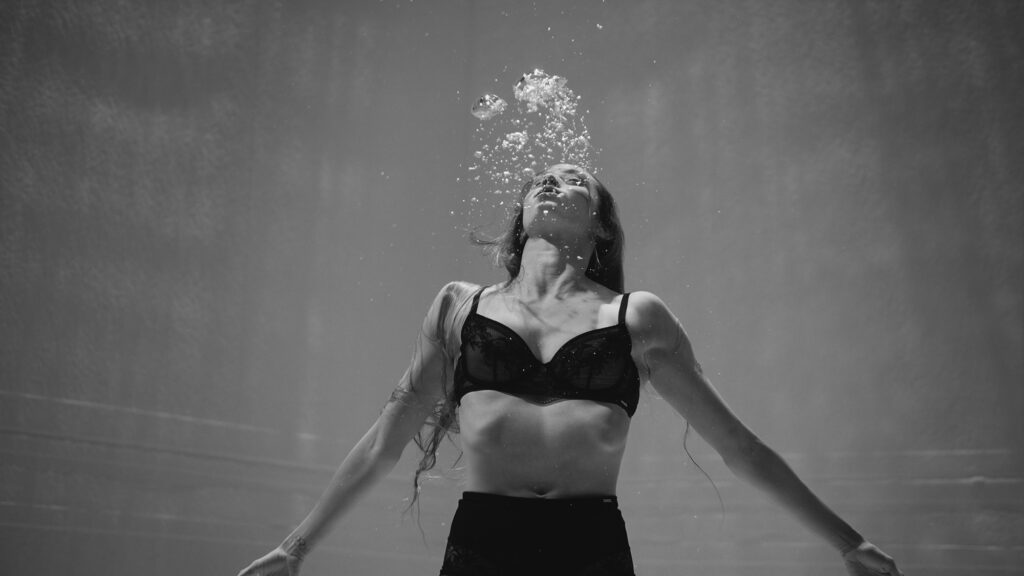Many artists have a predilection for the creation of dystopian scenery, and the audience lives for it. But why do we love dystopias so much? Could it be that we are becoming a dystopian society and need an escape? Or is it because we simply like to imagine radical scenarios?
Dystopias are fictive pieces in which we reflect on the future through a pessimistic lens. There have been dystopic motifs in literature, art, and music for quite some time now.
After the isolation period at the beginning of the pandemic where everyone had to coop up in their shell, we inevitably became increasingly individualized. It became easier to step back from society and actually comment on it. This may be the culprit behind the significant rise in dystopian artwork in recent years. However, the concept of dystopia has been around for long already. As a matter of fact, we even can find a fictional dystopia back in the 1860s in which Jules Verne talked about the internet, automobiles, and high energy prices affecting transportation.
This genre also has political roots that date back to the 1940s. Dystopian imagery was used to trigger anxiety regarding the unknown future as means of better controlling the masses. It wasn’t too hard, since the high degree of technological development gave way to countless questions about what the future can bring. But that’s enough history for now…
What exactly is a dystopian society?
Oftentimes dystopian societies, particularly those revolving around extreme societal-orders, are made up of a stand-offish population conditioned by a sort of unwritten set of rules delimiting the things they have to do or must abstain from. In these cases, the presence of an omnipotent authority that rules by fear will usually govern most of the narrative. However, realities differ from dystopia to dystopia. These variations in types of dystopias have been represented time and time again through art. So let’s take a look at some of the most common interpretations of a dystopia in art.
Post-Apocalyptic Dystopia
We all have our fears regarding the end of the world. Some may imagine an alien attack, others might have slightly more realistic concerns and expect an environmental collapse. In any case, if we look at the art world, we can get an idea about what an apocalypse could bring about: dystopia.
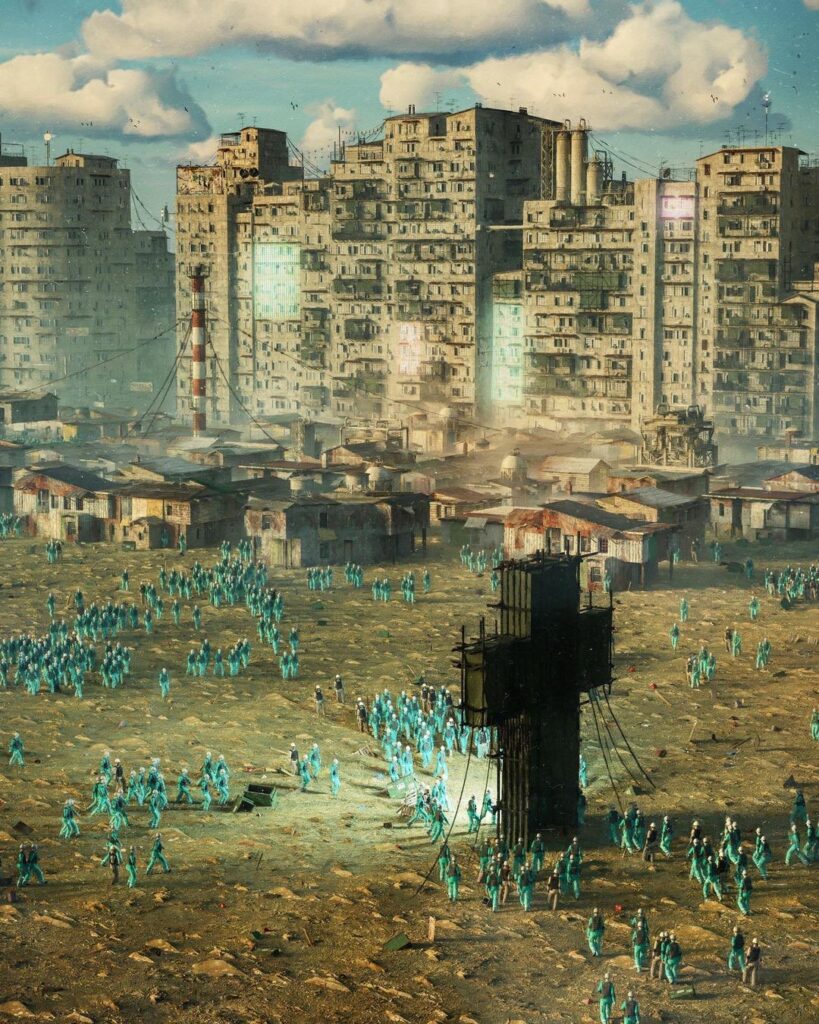
These scenarios start with a catastrophic event that erases most of humanity from the Earth. Humanity starts over, as known information has been wiped out after the incident. Then, the remaining people came together to create a society that will not repeat the same mistake as the previous one. To do so, they come up with a rigid social structure that almost always forces people to obey the system.

This alternate reality primarily identifies with a strict societal system ruled on the basis of some categorical semi-hierarchical structure. We can think of structures such as that of the Hunger Games, as people are only partly-free to choose the place they will stay and the social ladder is very hard to climb. In these dystopias, the narrative supports the societal system and even justifies it on some occasions in the name of the collective good.
The important thing about these dystopian worlds is that the guarantor of the system is humanity and no other factor. Narrative helps to achieve that goal because the consensus that has been aimed to be created is that “humanity is now safe thanks to the social system.”
There is another dimension to this style of dystopian art as we sometimes sense the loneliness motif. The art piece may reflect the moment just after the apocalypse, so the nature-oriented abandoned city aesthetic can be considered a look for this category. We must admit that, especially in recent years, this sort of imagery has been very present in the art-scene. Could the heightened environmental concerns be the trigger for this happening?
Technological Dystopia
Imagine the classics in dystopian literature, Nineteen Eighty-Four or Brave New World for example. Even though they represent the phenomenon at different levels, both can be considered perfect examples of technological dystopias where the societal pressure from the authority system is imposed one way or another with the help of technology. Think along the lines of a sea of cameras for surveillance or big screens in public spaces to reinforce the social hierarchies.
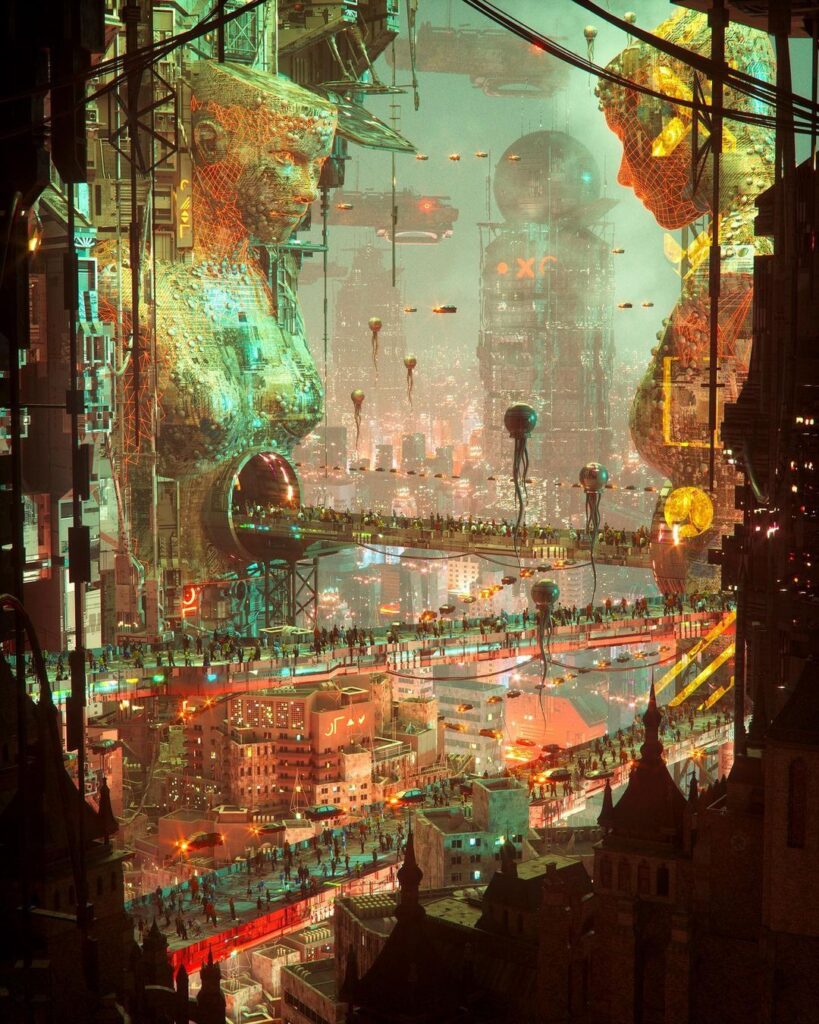
This dystopia may be a result of technophobia mixed with the ever-present anxiety toward the unknown future. Especially when we consider the times at which this trend has emerged, we may spot a common denominator: the exacerbated pace of technological advancements. However, one might ask, if technology is still improving, why do we not encounter technological dystopias as often?
This style is mostly present in the digital art field rather than in conventional art forms because of the possibilities that 3D design allows for. So, even though technophobia may be a factor in literature-based fictional dystopias, we believe this element may have been replaced with a more profound fear, which is unknown to us.

However, dystopian art is such a huge trend that we can’t limit it with categorical definitions. There are also some hybrid dystopias, just like in the Matrix. Picture this: Machines have taken over humanity -a technological dystopia- but people are living through a made-up story without the memories of their past, hence the post-apocalyptic dystopia.
Are We Heading Towards A Dystopian Future?
All of these anxieties aside, there is a nuance that may keep us away from these alternative dystopian scenarios.

Ordinary people in a dystopian world have to follow a set of rules to exist within the community. The critical take from this is that in dystopias, the focus is on the collective and not on the individual. In fact, individuals aren’t even considered a unit within the dystopian society. On the contrary, the individual rebels who become alienated from society become the protagonists who try to break free from the system.
In this case, if we consider the current tendency toward individualization, we are doing precisely the opposite of what the -figurative- dystopia rule book denotes. Dystopias appear as designs of possible futures, but we retreat to our individual cocoons to produce these pieces. This means that we are discontent with how the world and society function these days, and we translate our social commentary on the present system into art.
In this era of self-expression, we need to express ourselves and talk about our concerns, including our anxieties about how the future may be. Expressing these worries in the form of art frees us in part from the mental load of that fear of the unknown. If we look at it from this perspective, dystopian art may be a nice way of reaching catharsis.
Moreover, the aesthetic of a dystopia is appealing to us because of two interrelated factors. Firstly, as we have stepped into an increasingly digitalized world, we are now used to seeing art that goes beyond our imaginations. The themes have become more connected to everyday life, and we, therefore, relate to them more. Digitalisation encouraged us to explore the limits of our creativity, both as an artist and as a member of the audience.

The second reason is also associated with digitalisation. As we became more used to Digi-mentality in contemporary life, we become more capable of interpreting digital art itself. As we interpret, we begin to empathize with the figure in the artwork. We feel their frustration and desperation, but at the same time, sometimes we feel their hope. This last sensation is relatively new in dystopian art pieces because we are used to seeing dark and inhuman themes in this trend. We believe this shift happened because the idea of dystopia is changing its shape.
As Mahatma Gandhi poetically stated, “In the midst of darkness, light persists,” and dystopian art is no exception. Hope appears as a light and it is one of the motifs that we have begun to see more often. So perhaps, in a weird twisted set of events, this is the real purpose of dystopias. Not to discourage us from the future and plunge us into a sense of doom for what is to come, but rather to allow us the opportunity to find the light at the end of the tunnel, however dim it may seem.
